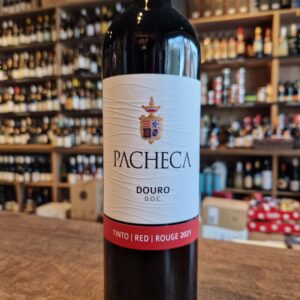-
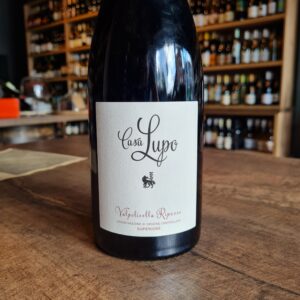 Great Ripasso wine here, any wine enthusiasts will see it as an honest to the point wine on it's Ripasso process. Otherwise known as a ‘Baby Amarone’. The term “Ripasso” means “repassed” referring to the production process whereby regular, fermented Valpolicella (which is a blend of three regional native red grape varieties – Corvina, Rondinella and occasionally Molinara) is added to a cask containing the skins and lees left over from recently fermented Amarone wines. The process of adding (or “repassing”) the lighter Valpolicella wine over the remainders of the “bigger” Amarone wine imparts additional color, texture and flavor to the Valpolicella wine. The “Appassimento” process is an ancient wine making technique used in Northern Italy to make Amarone – the Daddy of Italian wine and its by product Recioto della Valpolicella (a sweet red wine). Grapes are air dried on racks for a period of at least a couple of months and often as many as six, before being pressed. Also, it induces a second fermentation of the wine that increases the wine’s alcoholic content. The end result is a wine that retains the vibrancy of Valpolicella but is darker in colour, bigger and more flavourful and complex than the original Valpolicella. Ripasso wines are rich, full-bodied and share some of the same aroma and flavor profiles as Amarone wines, just less so. Since Ripasso wines are more approachable and less expensive than Amarones they can be enjoyed more regularly. The land is at an altitude of 450 meters above the see level and the soil is made by the alteration of calcareous-fossilized formations, in particular the red flake and biancone marble.After harvesting by hand, the Valpolicella, before aging, is macerated a second time on the mark of the Amarone just drawn and left to rest for about 15-20 days. Then a maturation in oak barrels of 500/1000 LT for 18 months takes place. Ageing in bottles follows that lasts until optimal maturity. It matches perfectly with mushroom risotto, red meat such as barbecue steak or white meat such as stewed rabbit, perfect with cheese of medium maturing.
Great Ripasso wine here, any wine enthusiasts will see it as an honest to the point wine on it's Ripasso process. Otherwise known as a ‘Baby Amarone’. The term “Ripasso” means “repassed” referring to the production process whereby regular, fermented Valpolicella (which is a blend of three regional native red grape varieties – Corvina, Rondinella and occasionally Molinara) is added to a cask containing the skins and lees left over from recently fermented Amarone wines. The process of adding (or “repassing”) the lighter Valpolicella wine over the remainders of the “bigger” Amarone wine imparts additional color, texture and flavor to the Valpolicella wine. The “Appassimento” process is an ancient wine making technique used in Northern Italy to make Amarone – the Daddy of Italian wine and its by product Recioto della Valpolicella (a sweet red wine). Grapes are air dried on racks for a period of at least a couple of months and often as many as six, before being pressed. Also, it induces a second fermentation of the wine that increases the wine’s alcoholic content. The end result is a wine that retains the vibrancy of Valpolicella but is darker in colour, bigger and more flavourful and complex than the original Valpolicella. Ripasso wines are rich, full-bodied and share some of the same aroma and flavor profiles as Amarone wines, just less so. Since Ripasso wines are more approachable and less expensive than Amarones they can be enjoyed more regularly. The land is at an altitude of 450 meters above the see level and the soil is made by the alteration of calcareous-fossilized formations, in particular the red flake and biancone marble.After harvesting by hand, the Valpolicella, before aging, is macerated a second time on the mark of the Amarone just drawn and left to rest for about 15-20 days. Then a maturation in oak barrels of 500/1000 LT for 18 months takes place. Ageing in bottles follows that lasts until optimal maturity. It matches perfectly with mushroom risotto, red meat such as barbecue steak or white meat such as stewed rabbit, perfect with cheese of medium maturing. -
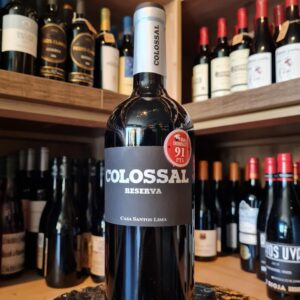 This blend of Touriga Nacional, Syrah, Tinta Roriz, and Alicante Bouschet lives up to its name. With an intense rubi colour, this wine presents itself with a great concentration in the nose. Extremely rich aroma with predominance of red ripe fruits and some floral notes, well integrated with notes of spices coming from the ageing in French and American oak barrels. In the mouth it shows great complexity with notes of plums and blackberries. The finish is rich and elegant. Excellent wine for hearty spiced meals with red grilled or roast meat, lamb and game dishes. Enjoy!
This blend of Touriga Nacional, Syrah, Tinta Roriz, and Alicante Bouschet lives up to its name. With an intense rubi colour, this wine presents itself with a great concentration in the nose. Extremely rich aroma with predominance of red ripe fruits and some floral notes, well integrated with notes of spices coming from the ageing in French and American oak barrels. In the mouth it shows great complexity with notes of plums and blackberries. The finish is rich and elegant. Excellent wine for hearty spiced meals with red grilled or roast meat, lamb and game dishes. Enjoy! -
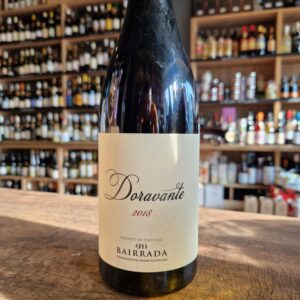
Nuno's philosophy is in keeping with this. In his own words, his wines are "a pursuit for balance with the utmost respect for nature".
Think of Doravante as an old-school claret, with lighter red fruit flavour and fresh pencil shaving mineral character. The blend is Baga and the better-known Touriga Nacional, fresh and elegant and long. So delicious and such an exciting region of Portugal.
Excellent served with strong dark meat and game dishes
-
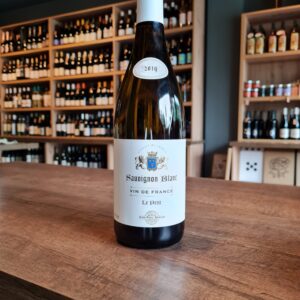 This is an excellent value French Sauvignon Blanc from the Loire valley and resembles the big Sancerre wines of the region . This Petit has nothing petit about it and has an outstanding quality and is very flexible. Can be drunk on it's own or paired with grilled trout, bass or fresh goats' cheese. Jean Paul Seguin winery is situated in the small village of Verdigny in the Sancerre region, the Fournier family has been making wine for many generations. The estate has grown from 5 hectares in 1950 to almost 30 hectares today, divided over the appellations of Mentou Salon, Pouilly-Fumé and Sancerre. The improvement made in vinification techniques and the permanent concern about quality result in well-balanced wines of great diversity. Enjoy this wine from the Loire without paying the big prices of its counterparts
This is an excellent value French Sauvignon Blanc from the Loire valley and resembles the big Sancerre wines of the region . This Petit has nothing petit about it and has an outstanding quality and is very flexible. Can be drunk on it's own or paired with grilled trout, bass or fresh goats' cheese. Jean Paul Seguin winery is situated in the small village of Verdigny in the Sancerre region, the Fournier family has been making wine for many generations. The estate has grown from 5 hectares in 1950 to almost 30 hectares today, divided over the appellations of Mentou Salon, Pouilly-Fumé and Sancerre. The improvement made in vinification techniques and the permanent concern about quality result in well-balanced wines of great diversity. Enjoy this wine from the Loire without paying the big prices of its counterparts -
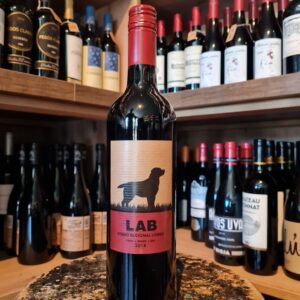 Lab tested and approved! This Lab is asking to be walked. Hitting all the puns here, only because that is exactly what you will get with this wine. It does what it says on the tin, if not more. This lovely red from Lisbon is full bodied but smooth and is very aromatic with notes of ripe black and red fruits. On the palate, juicy plums and dark berry fruit flavour with plenty of fresh yet fine tannins that take over at the finish, along with flavours of spice and liquorice. It is not top of the shelf but it does punch above its weight.
Lab tested and approved! This Lab is asking to be walked. Hitting all the puns here, only because that is exactly what you will get with this wine. It does what it says on the tin, if not more. This lovely red from Lisbon is full bodied but smooth and is very aromatic with notes of ripe black and red fruits. On the palate, juicy plums and dark berry fruit flavour with plenty of fresh yet fine tannins that take over at the finish, along with flavours of spice and liquorice. It is not top of the shelf but it does punch above its weight. -
 Menina d’Uva is a small winery located in Uva, a remote village in the quiet and desolate countryside of the Northeast of Portugal. Female winemaker Aline Domingues moved from Paris to this area from which her parents had emigrated to Paris to give their children better opportunities. A controversial move within the family but one that I wholeheartedly support. Aline clearly is a talented winemaker crafting beautifully pure wines. Made from 70% red grapes (including Bastardo, known in the Jura as Trousseau) and 30% white grapes including Malvasia and white Bastardo. It’s still a hearthy red that’s crispy and refreshing; cherries, pomegranate with a beautiful smell of the forest. Highly recommended.
Menina d’Uva is a small winery located in Uva, a remote village in the quiet and desolate countryside of the Northeast of Portugal. Female winemaker Aline Domingues moved from Paris to this area from which her parents had emigrated to Paris to give their children better opportunities. A controversial move within the family but one that I wholeheartedly support. Aline clearly is a talented winemaker crafting beautifully pure wines. Made from 70% red grapes (including Bastardo, known in the Jura as Trousseau) and 30% white grapes including Malvasia and white Bastardo. It’s still a hearthy red that’s crispy and refreshing; cherries, pomegranate with a beautiful smell of the forest. Highly recommended. -
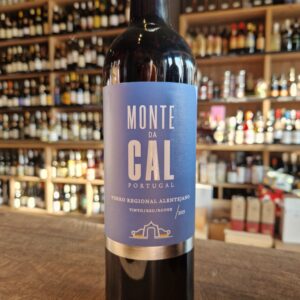 It is in the heart of the genuine Alentejo, with its unique aromas, flavors and textures, nature, silence and immensity, that the 80 hectares of vineyards at Herdade Monte da Cal, located in the municipality of Fronteira, in the parish of São Saturnino, extend over 80 hectares of vineyards. about 40 km from Portalegre. Surrounded by the tranquility of the northern Alentejo plain, it is part of the calm environment of nature characteristic of this part of the country, surrounded by an infinity of vineyards, which we can only see, far away. Here, the red varieties Trincadeira, Syrah, Aragonês, Alicante Bouschet, Alfrocheiro and Touriga Nacional are planted. The architecture and decoration of the estate reflect the Arab influences, so present in the Alentejo culture. The estate’s modern winery is a fundamental pillar to reinforce the visibility of the wines of this house, and a wine tourism project is already planned for this property. Suggested pairing with dishes from the Mediterranean, Chinese, Indian and African cuisine.
It is in the heart of the genuine Alentejo, with its unique aromas, flavors and textures, nature, silence and immensity, that the 80 hectares of vineyards at Herdade Monte da Cal, located in the municipality of Fronteira, in the parish of São Saturnino, extend over 80 hectares of vineyards. about 40 km from Portalegre. Surrounded by the tranquility of the northern Alentejo plain, it is part of the calm environment of nature characteristic of this part of the country, surrounded by an infinity of vineyards, which we can only see, far away. Here, the red varieties Trincadeira, Syrah, Aragonês, Alicante Bouschet, Alfrocheiro and Touriga Nacional are planted. The architecture and decoration of the estate reflect the Arab influences, so present in the Alentejo culture. The estate’s modern winery is a fundamental pillar to reinforce the visibility of the wines of this house, and a wine tourism project is already planned for this property. Suggested pairing with dishes from the Mediterranean, Chinese, Indian and African cuisine. -
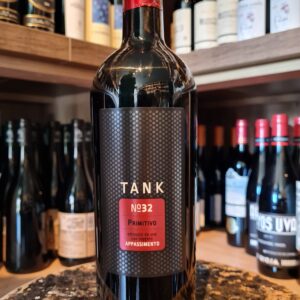 The TANK No 32 Primitivo Appassimento from Cantine Minini sparkles a wonderful dark red wine. This Italian red inspires with its perfect combination of elegance and power. The bouquet reveals aromas of ripe cherries, juicy plums and dried fruit, especially figs, dates and raisins come to mind. The palate of TANK 32 impresses with its dense and concentrated character. The pleasant and equally discreet residual sweetness gives this red wine a wonderful velvety texture. The long finish of Tank No 32 is carried by delicate notes of nougat and dark chocolate. The Tank No 32 Apassimento is a great accompaniment to strong game dishes with fresh mushrooms and well matured cheeses.
The TANK No 32 Primitivo Appassimento from Cantine Minini sparkles a wonderful dark red wine. This Italian red inspires with its perfect combination of elegance and power. The bouquet reveals aromas of ripe cherries, juicy plums and dried fruit, especially figs, dates and raisins come to mind. The palate of TANK 32 impresses with its dense and concentrated character. The pleasant and equally discreet residual sweetness gives this red wine a wonderful velvety texture. The long finish of Tank No 32 is carried by delicate notes of nougat and dark chocolate. The Tank No 32 Apassimento is a great accompaniment to strong game dishes with fresh mushrooms and well matured cheeses. -
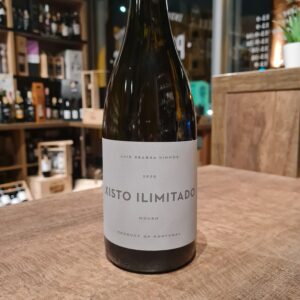 Another under the radar Portuguese White. This drop is now considered one of the new best contemporanean whites in Portugal. Produced by Luis Seabra, who worked for more than 10 years as an oenologist for Dirk Niepoort and finally started to follow his own path in 2012. The name he gives to his wines is indicative of his vision of wine: Xisto (Schist). He makes very pure wines that reflect their terroir. Luis Seabra sets a new standard in the Douro with his pure wines. Xisto Ilimitado, is a Portuguese analogue of the idea of a "village-level" Burgundy. A blend of six varieties planted in three sub-areas of the Douro, Ilimitado is a glimpse of the appellation's schist soil. Luis Seabra, has concentrated his production on the different soil types of the valley. Bright, concentrated and fresh, Xisto Ilimitado is an excellent introduction to the new Douro. Vineyards located in Cima Corgo. The vines are between 30 and 45 years old, planted in micaceous schist at an altitude of 500 to 600 m, and are a sub-region that experiences extreme highs and lows in terms of temperature, with one of the largest day-night temperature deltas in Portugal. As such, the fruit experiences an extended resting period. Annual rainfall of 400 mm typical of the region. Goes wonderfully with roasted poultry, white fish and seafood, and especially with the spiciest preparations
Another under the radar Portuguese White. This drop is now considered one of the new best contemporanean whites in Portugal. Produced by Luis Seabra, who worked for more than 10 years as an oenologist for Dirk Niepoort and finally started to follow his own path in 2012. The name he gives to his wines is indicative of his vision of wine: Xisto (Schist). He makes very pure wines that reflect their terroir. Luis Seabra sets a new standard in the Douro with his pure wines. Xisto Ilimitado, is a Portuguese analogue of the idea of a "village-level" Burgundy. A blend of six varieties planted in three sub-areas of the Douro, Ilimitado is a glimpse of the appellation's schist soil. Luis Seabra, has concentrated his production on the different soil types of the valley. Bright, concentrated and fresh, Xisto Ilimitado is an excellent introduction to the new Douro. Vineyards located in Cima Corgo. The vines are between 30 and 45 years old, planted in micaceous schist at an altitude of 500 to 600 m, and are a sub-region that experiences extreme highs and lows in terms of temperature, with one of the largest day-night temperature deltas in Portugal. As such, the fruit experiences an extended resting period. Annual rainfall of 400 mm typical of the region. Goes wonderfully with roasted poultry, white fish and seafood, and especially with the spiciest preparations


